‘Belonging’
The wall text at the start of this exhibition reads, in part;
Belonging takes different forms. Humans can share an affinity for a specific place, familial bonds and friendship, or spiritual connections based on religion or stories. Geography can also underpin local, national, and international connections. Hobbies and traditions in both real and imagined space can inspire a sense of camaraderie.
I’ve previously mentioned Wendy’s propensity to respond to wall texts by saying ‘I don’t have the bandwidth for that’. On this occasion, it was me perhaps imperceptibly rolling my eyes. Belonging does take different forms, but it’s hard to see how you can successfully curate a coherent exhibition around a feeling you’re choosing to define so expansively.
And, to be honest, I didn’t get it. But there were some nice pictures.
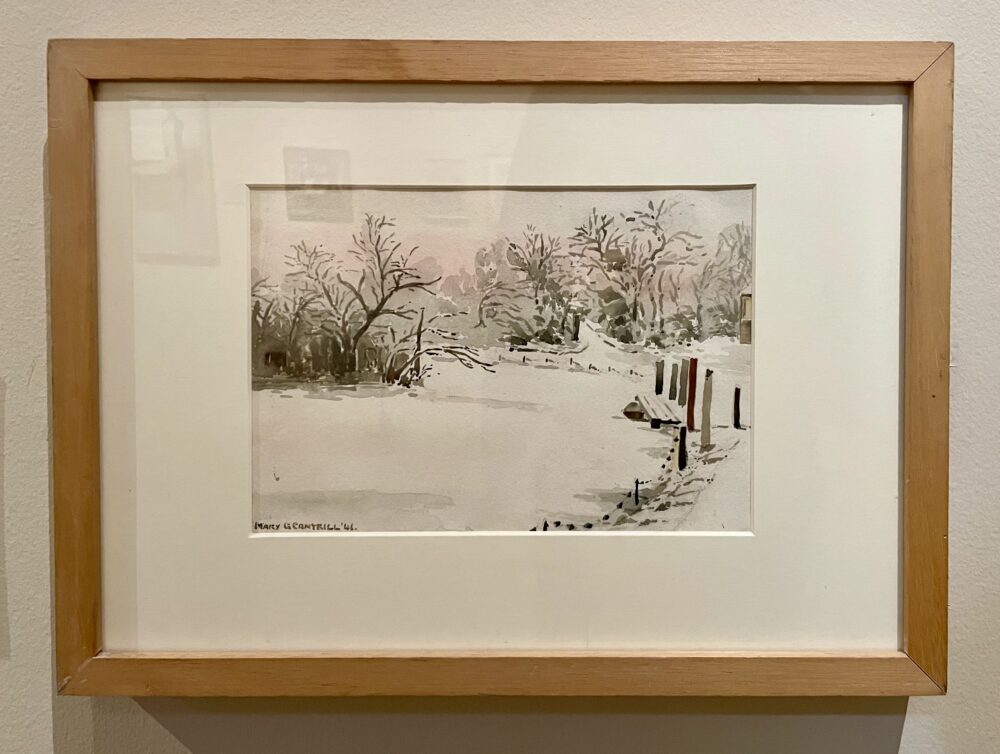
Here’s Mary Cantrill’s 1941 watercolour of a local landmark, Leazes Park Lake in the Snow of 1941. The label said that the park ‘offers tranquil escape in the bustling city’, which is probably true, but my overriding association with Leazes Park is of being asked to find patients who had absconded there from the RVI, which is just over the road.
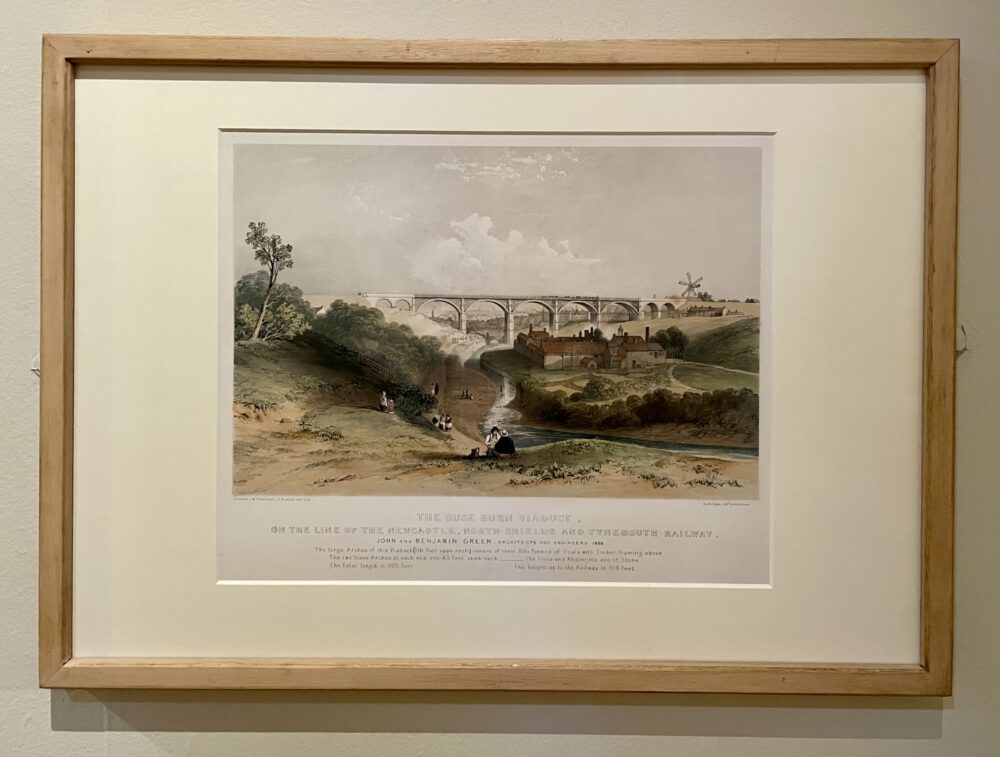
This is JW Carmichael’s 1839 lithograph of The Ouse Burn Viaduct, looking like it is crossing an impossibly rural setting. It’s only a few weeks since I featured a photograph of the viaduct on this very blog.
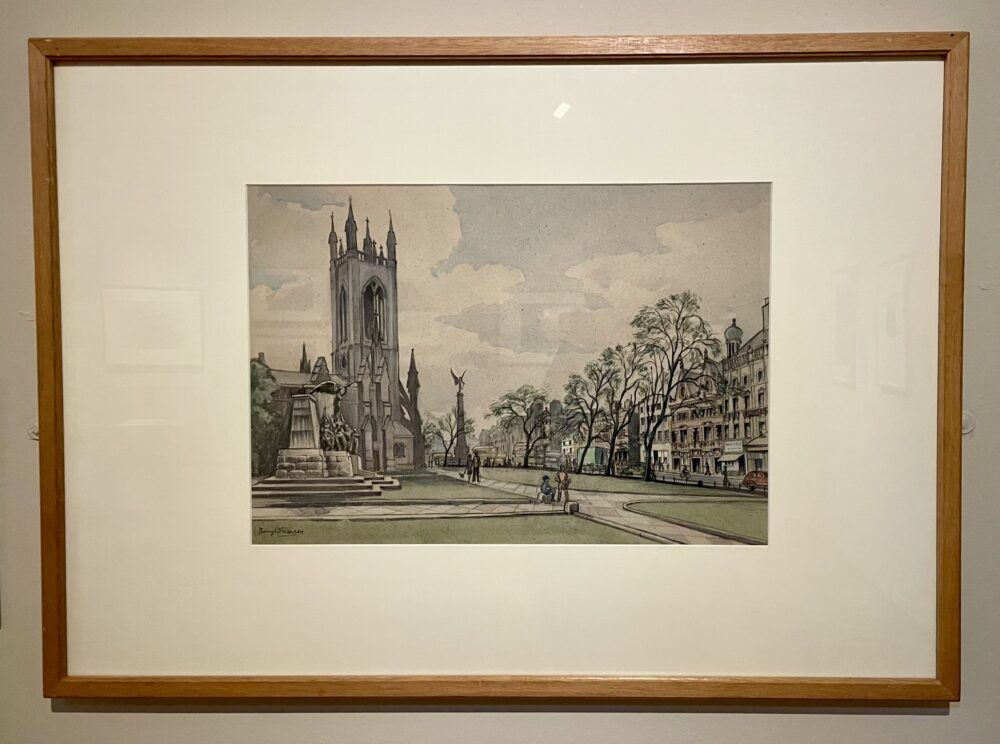
This is Beryl Davies’s 1940s watercolour of The Haymarket, a part of Newcastle that has changed surprisingly little despite huge changes outside of the frame. This was painted as part of a project run the The Laing. After the council approved major redevelopment work in the city centre, the gallery’s committee sent forth artists to document the city as it existed before the work started, which feels somehow inspired and a little eccentric at the same time.
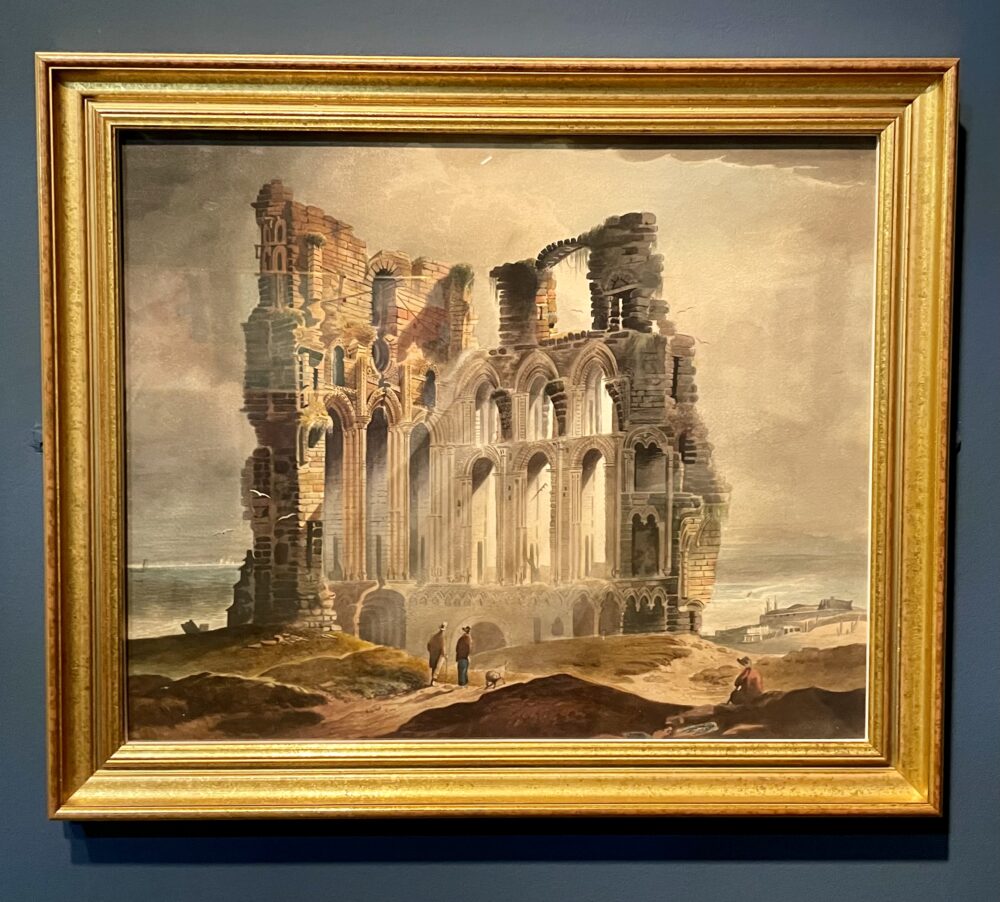
There’s something about the lighting in this picture which, along with all of the arches, that sort of feels like the kind of art that AI generators often spit out. It is, in fact, an 1813 painting by Thomas Miles Richardson, show a View of the Ruins of Tynemouth Monastery. For some reason, I had always thought that the the monastery had been damaged in the war, so to find out that it was in fact already a ruin over two centuries ago was a bit of a surprise!
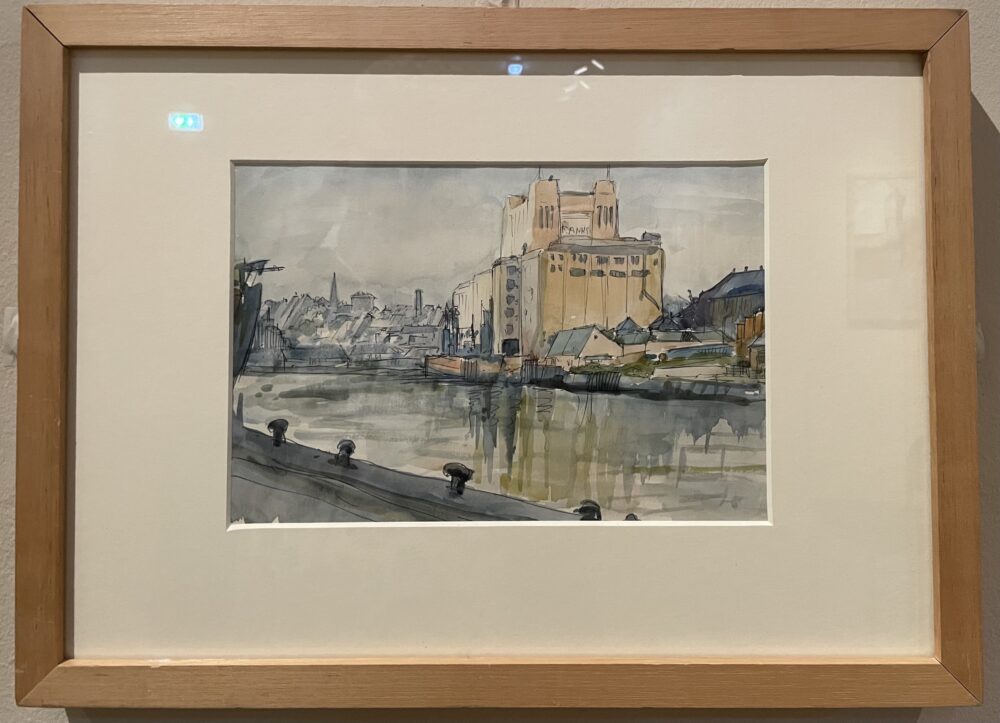
And lastly, here’s that other local home of brilliant art, the Baltic, captured in watercolour here by an unknown artist at some point when it was clearly still a flour mill rather than a centre for contemporary art.
This post was filed under: Art, Beryl Davies, JM Carmichael, Mary Cantrill, Newcastle upon Tyne, The Laing, Thomas Miles Richardson.